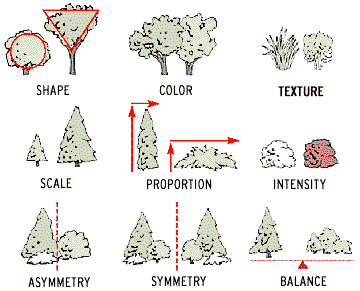
| |


Planning Your Garden
Designing your own garden may seem like a daunting task. Standing on the threshold of a new home, looking out over a barren patch of ground--or worse, a tangle of overgrown plantings--can easily make you want to throw up your hands and reach for the Yellow Pages. But hold on a minute. Planning a garden can be a fun, rewarding process.
Stop and think about what you'd like to have in your landscape: a peaceful corner, a bed of vegetables, plenty of color, views of a distant vista. Imagine yourself enjoying your garden, because you've installed the plants YOU like and created the structures you really need. Even if you consult a garden professional-a landscape architect, garden designer, or other pro--it helps to have a few solid ideas before you ask for help. And any time you're dealing with experts, it doesn't hurt to know their lingo.
Like any major home-improvement project, landscaping calls for advance planning. Even a small lot is surprisingly flexible and warrants a systematic weighing of the design options that are available.
Once you have outlined areas of use in the garden, experiment on paper with the look of each one, keeping in mind the design principles explained here. At this stage, think of plantings in terms of their general visual attributes and such basic characteristics as whether they are evergreen or deciduous, flowering or nonflowering. Consider physical comfort in your planning. Hedges and fences can screen an area from the street or neighboring houses. A strategically placed tree will filter light or create shade and can lower the temperature on a patio by 15 to 20 degrees. A row of evergreen shrubs will shelter a walkway from winter winds. Choosing the specific plants that meet your criteria is the last step in the design process.
Visual Building Blocks
Each tree and shrub in a landscape has a number of visual attributes-shape, color, texture, scale (or size), proportions (the relationship between vertical and horizontal dimensions), and intensity of color. As you plan your design, picture how the visual qualities of the individual plantings will blend or contrast and how each tree or shrub might contribute to an overall feeling.
Design elements need to be considered not just individually but also in combination. Terms such as symmetry or balance refer to their joint effects on the eye and mind.

Design elements to be considered.
Continued >>
|
|

|







